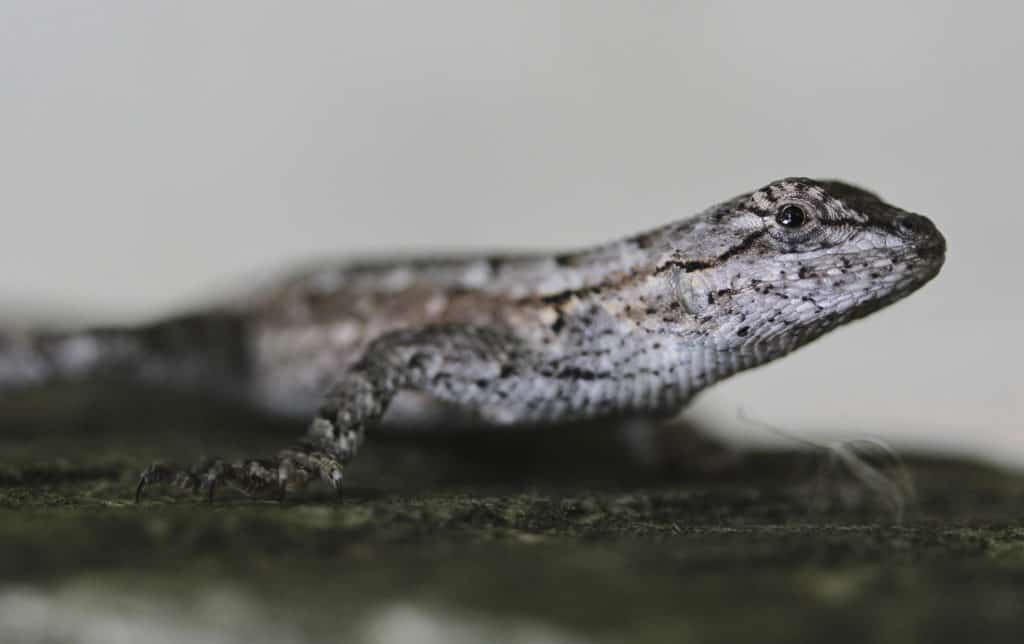Creature Feature

Scurrying on a Split Rail
By Wayne Bierbaum
One of my favorite little lizards is the eastern fence swift. Their gray-colored keeled (ridged) scales allow them to blend into weathered wood and stone. Since they are frequently found on split rail fences, the origin of their name is obvious.
Even though they dart away quickly from danger, they are a bit passive and tend to wait for insects to enter their area rather than pursue active hunting. The adult lizards are a chunky 3 inches long and have a rounded shovel-shaped head. The gray-keeled back gives way to a pale white or tan belly.
Adult males have a beautiful shimmering blue patch outlined in black on each side of the throat that extends down the edge of its belly. During mating displays or fighting with other males, specialized connective tissue and muscles will cause the colored patch to stretch foreword making the color more visible. The colorful throat display is called a dewlap. The males will perform some rapid pushup-like motions, tilt their head up and show the dewlap, hoping that a rival male will get lost or the female will get the hint.
After mating, females will carry two eggs until the embryo is partially formed and then they lay them in a slightly moist area, like under a stone or log. After they are born, the young are fully independent. They only live about five years and only have two young a year, which means the fence swift cannot have explosive population growth.
From my observations, their populations do seem fragile. When I first moved to the Annapolis area, some 30 years ago, a collection of large granite stones, near the South River, held several dozen fence swifts. My sightings of those lizards dwindled over ten years, and in the last 20 years, I have not seen a single one.
At a county park with split rail fences, I routinely watched them battle on the top of the fence but I have not seen any in two years. I do not know what has affected my two observation areas but the rocks by the river were taken over by skinks and the area flooded severely several times. I witnessed newly hatched swifts being eaten by much larger skinks. At the park, black racers were present along the fence on several occasions. The racers are snakes that are fond of eating lizards.
I also saw some boys catching them, which they stopped when I asked them but I would guess the temptation to keep a colorful, calm lizard as a pet is too tempting and they may have returned. Remember that collecting wild reptiles for pets is illegal without a specific permit.
Maryland Department of Natural Resources lists the eastern fence swift as common throughout its range. I do believe that the population is sensitive to stress and that there are areas of local extinction. When insecticides are used, the lizards in our area will perish, either through direct contact or because their food source is gone.
I last saw a fence swift a year ago in Soldiers Delight Natural Environment Area in Owings Mills but hopefully, they will make a come back in parks closer to Annapolis.
